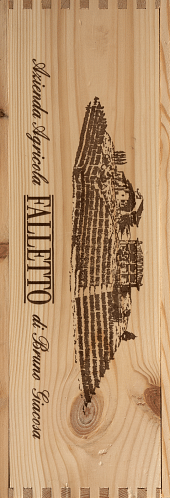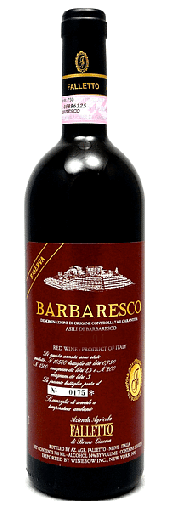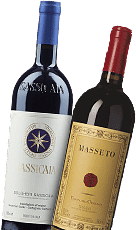
Investment wines: all you need to know
Good wine is not only a pleasure, but also a potential investment. By learning more about investment wines and relying on professionals, a wine bottle can become a true asset to treasure throughout the years. It is not by chance that investing in wine bottles is becoming a common practice, although it is important to become familiar with the best labels and production years.
The Tili winery vineyards extend for more than 15 hectares over the hills near the picturesque city of Assisi in the luxuriantly green heart of Umbria. The love for this land and its fruits is the force driving this family business that, for decades, has passionately and wholeheartedly dedicated itself to the production of top quality wine and oil.
Gianfranco and Graziella Soldera are guided by a philosophy of respect for the laws of nature, allowing it to express all its potential. On their estate southwest of Montalcino, they cultivate more than 23 hectares of the Sangiovese Grosso vine, which is used for their Brunello di Montalcino.
Select Pairing
It is also crucial to keep up to date with wine quotations, as to carefully value the most reliable and trustworthy investments.

Investment wines: learn more about their estimate and how to store them
Regardless of the type of wine, no bottle is the same. They are all valued differently and evaluating a collector’s item requires time.
For those who wish to invest in this sector without having the necessary knowledge, we recommend relying on professionals and wine cellars with years of experience, in order to obtain the best possible result.
If you are curious to learn more about the value of these wine bottles, you must first be patient… It normally takes a few years to reap the fruits of such an investment.
A detail that one must not overlook when speaking of investment wines is that the investment that a bottle of wine creates is calculated as net, without a particular taxation. Such a detail can make a world of difference, especially when searching for the perfect place to store the bottles.
From Italian to foreign wines appreciated around the world, what are the storing techniques for such incredible wine bottles?

How to invest in wine
Since investment wine bottles are an actual asset, they cannot be left lying around the house. There are a few important rules that must be followed and respected in order to maintain the wine’s quality throughout the years and increase the product value.
First of all, such products must not be exposed to direct sunlight or heat sources, which might ruin their taste and their value. It is recommendable to invest in a carefully studied wine cellar, with stable temperatures and constant humidity, and to rest the bottles horizontally.
Another rule concerns the position of the wine bottle: one must never store bottles upside-down or sideways. Special attention should also be given to the wine label, which must not be ruined.
It is also fundamental to not change the basic room temperature by following the experts’ suggestions. One should protect the wine bottles from possible vibrations and avoid moving them constantly.
But that’s not all! Wine bottles should be protected from strong chemical or natural smells, since they could compromise their taste by entering through the cork.
All these suggestions must be rigorously followed if you wish to create a long-term investment.
How to understand the wine market
Among the best wines on the market one cannot fail to mention Sagrantino, Barolo and Amarone, as well as autochthonous vineyards such as Nebbiolo and Sangiovese.
The selection is large, so it is recommendable to decide what your starting budget will be.
Among the best investment wines, to mention just a few, are Barolo Riserva Monfortino di Conterno, the only Italian wine compared to the French Premier Cru for quality and price, and Sassicaia. Sassicaia is the most known Italian brand around the world, as well as the first one that received a grade of 100/100 from Robert Parker. Any production year of Sassicaia is an investment, as its value will certainly increase with time.
A curiosity: aging wines are considered investment wines, also known as “shelter goods”.

The origins of the Tili cellars
The founder of the Tili family arrived here in Central Italy way back in 1200, as one of Barbarossa’s followers. And his descendants have never left. In 1978, following tradition and the family business, the owner of the company started to bottle the wine. His sole aim was to realise the dream of making the wine recognised, tasted and appreciated worldwide. And this is still happening down to today.
The Tili winery, which produces between 90,000 and 100,000 bottles a year, is now known in the United States, Japan, Denmark, Belgium, Austria, Sweden, Switzerland and Germany. The Tili wines stand out as value products due to the calcareous terrain on which they are grown, a terroir that is particularly permeable and unable to hold rainwater. This enriches the organoleptic profile of the grapes with saline. The strength of this family’s vineyards derives from the excellent geographic and climatic conditions. This combined with special growing techniques and lack of pesticides and weed killers produces wines of the highest quality. Tili products include Assisi Bianco DOC, Assisi Grechetto DOC, Assisi Rosso DOC, Gaudium, Muffa Reale, Assisi Pinot Nero DOC, Sacreterre and Young Assisi Rosso DOC.

Gianfranco and Graziella believe that, to obtain a fine product, you need to draw on past experience, fully understanding it, in order to verify and innovate it with modern experimental techniques. This is why the wines produced on the Case Basse estate are the result of research and study. Backed by faculties of agriculture in various universities and the department of microbiology in Florence, Casa Soldera wines are supported by an electronic control unit that checks the weather all year round and by careful study of the entire vinification stage, allowing control and analysis of the wine from the vine to the glass.

They do all this while respecting traditional cultivating techniques, with weed killer-free fertilising, a structure and organisation of the vines that allow for manual processing, dual pruning, thinning of the grapes and limited defoliation in the autumn that helps the fruit to ripen properly.




 Red
Red 












































